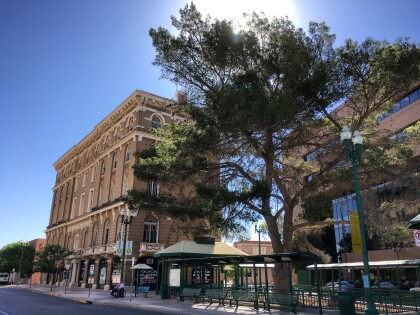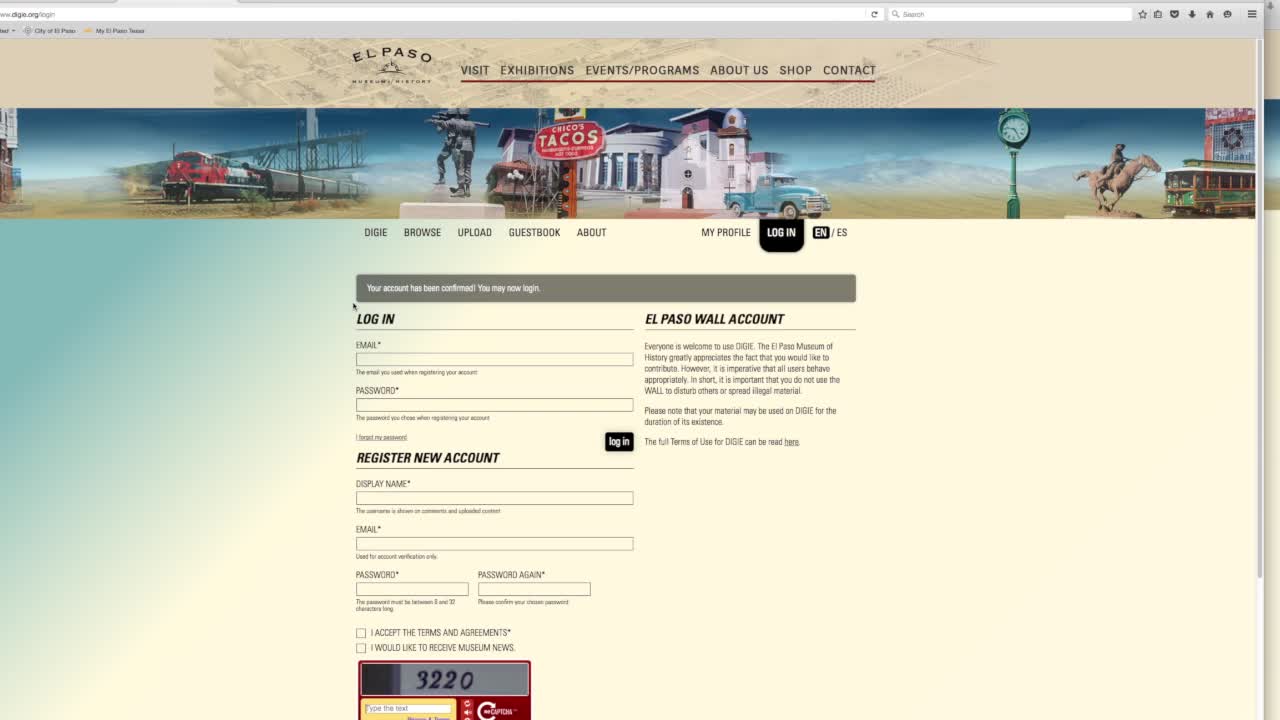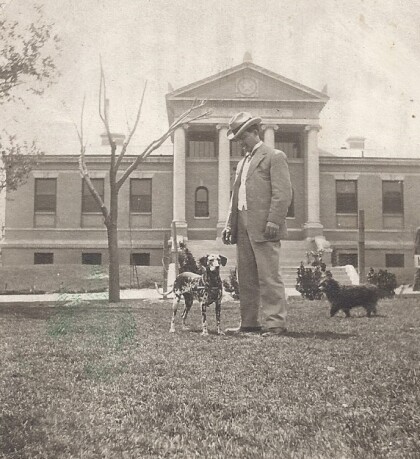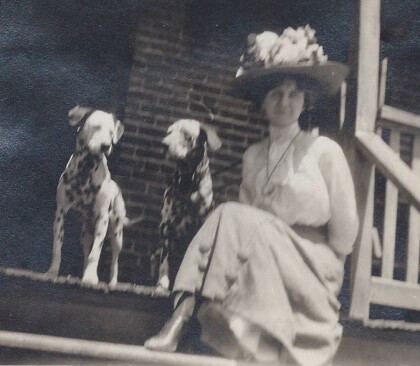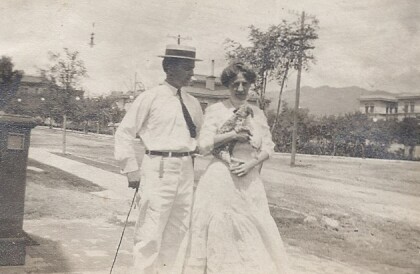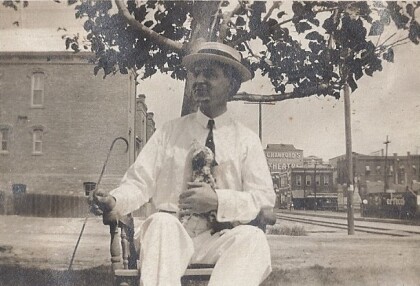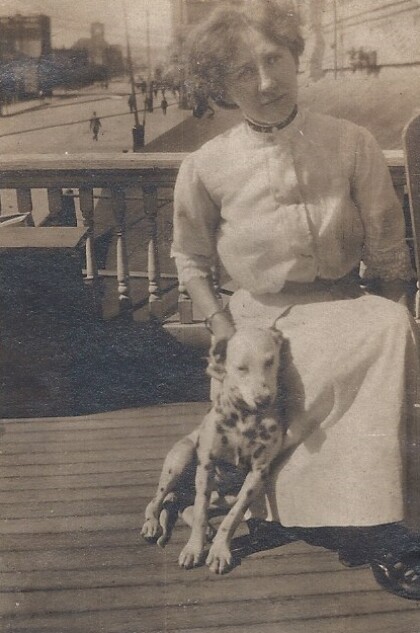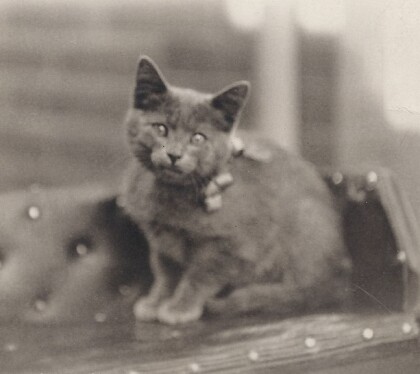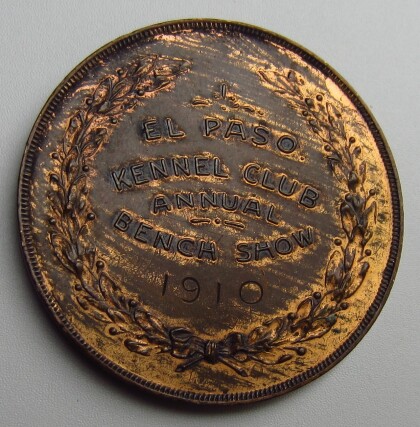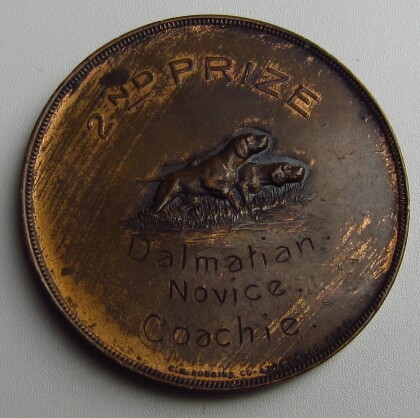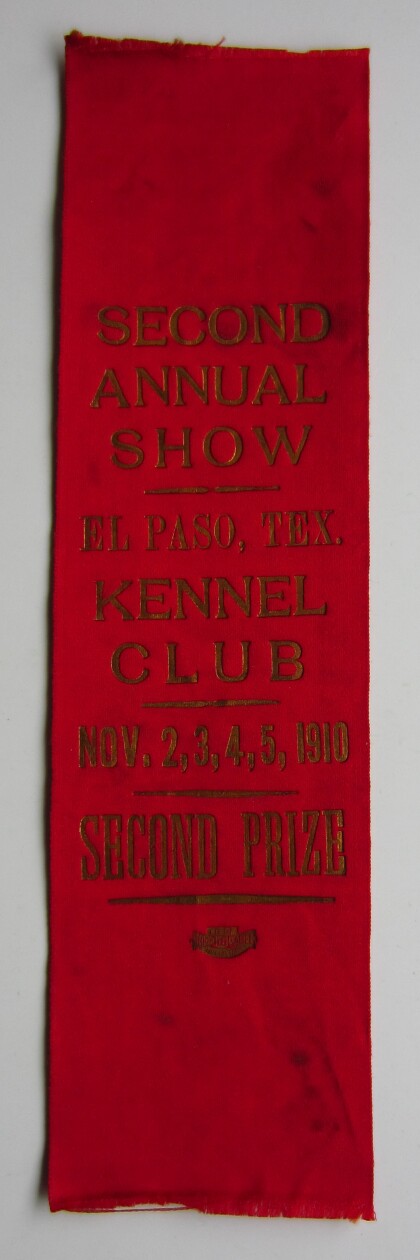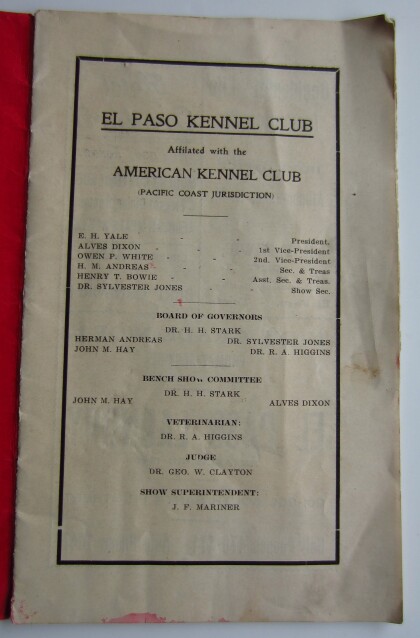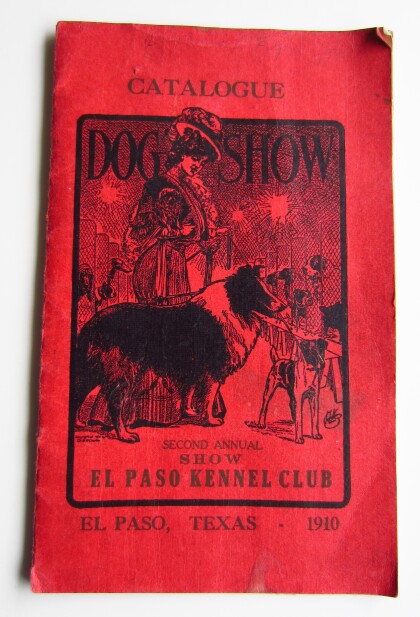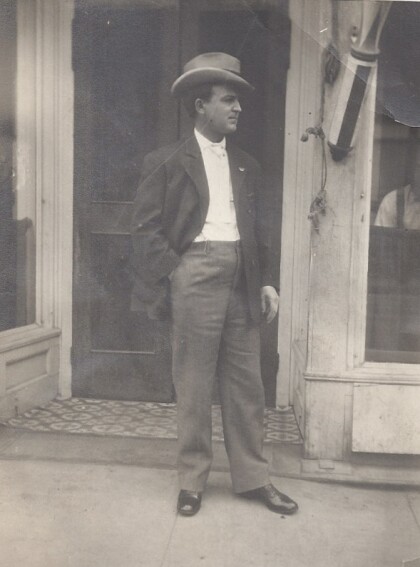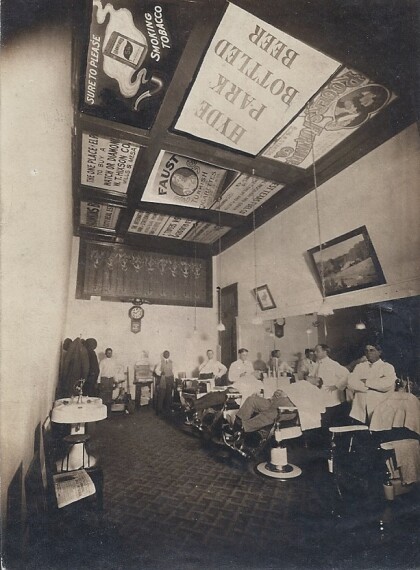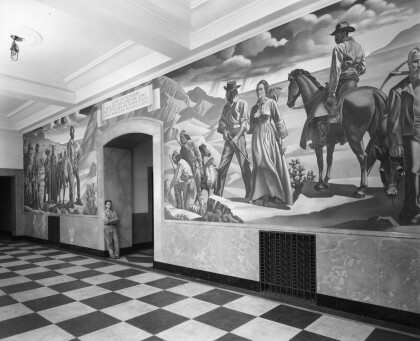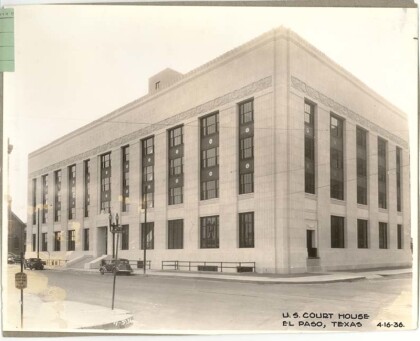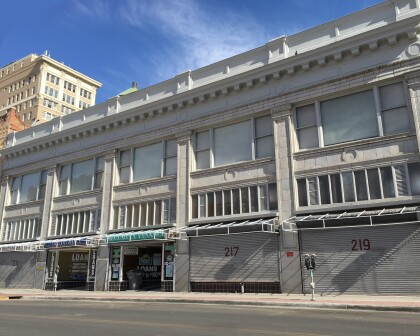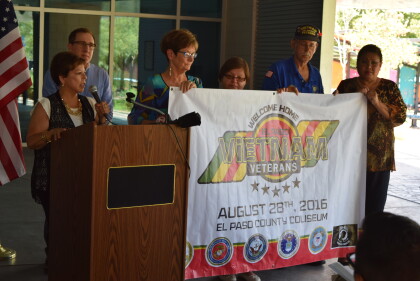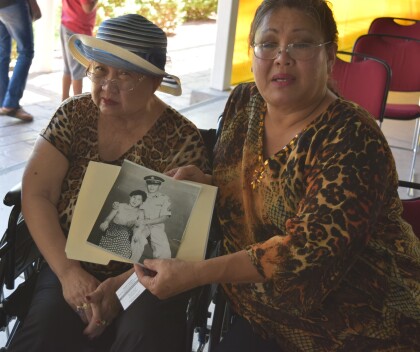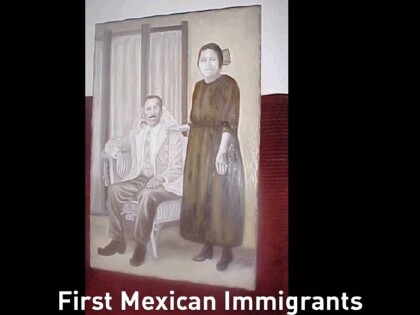Mapping Inequality & Reclaiming Place – Demolition of a Neighborhood

Mapping Inequality & Reclaiming Place – Demolition of a Neighborhood
In 1956, congress passed the Federal-Aid Highway Act and created a vast interstate highway network across the country. It encompassed a 41,000 system that connected populations of more than 100,000 residents. Completed in the 1990’s and at a cost of a hundred billion dollars, it profoundly changed the landscape of America and how citizens travel and conduct business.
Interstate 10 was one of the largest interstate highways built with a length of 2,500 miles. It spans from Jacksonville, Florida to Santa Monica, California. Interstate 10 made its way through El Paso in the early 1960’s. Much of the interstate would cut through existing El Paso neighborhoods such as Lincoln Park, Rio Grande, Downtown and Sunset Heights. Large parcels of land were bought out and families left their homes. Much of this demolition happened in El Paso’s then Eastside which included Lincoln Park Neighborhood, the epicenter for El Paso’s African American community. A large amount of homes and businesses were lost despite a nationwide protest to save these communities from erasure and possible health hazards coming from construction and automobiles.
This map from the “Mapping Inequality” project documents redlining in El Paso. Dating back to the 1930s, redlining was a widespread, discriminatory practice that started during the New Deal-era when the United States government began offering government-insured mortgages to prevent mass foreclosures during the Great Depression. As the program grew, the government began adding qualifications to who could qualify for these mortgages based on the value and location of homes. Color-coded maps were used to evaluate the risk associated with the loan and, across the United States, Black and other non-white neighborhoods were consistently deemed high risk and circled with a red line. By labeling these areas high risk, banks and other mortgage agencies were able to deny loans to people of color. Though redlining was ultimately deemed illegal under the Fair Housing Act of 1968, its effects are still felt today. Redlining inhibited families from upward economic mobility during an era of unprecedented economic growth post-WWII and also restricted movement within cities.
As a result, the majority of El Paso’s historic Black homes and businesses are located within these redlined areas. A current list of identified locations is available here on Google Maps: https://maps.app.goo.gl/4DW2ao2WTipU58G27
This object is currently on view in the El Paso Museum of History's newest exhibition Still We Rise: El Paso's Black Experience on view until January 2024.
Reportar esta entrada
Más sobre la misma comunidad-colección
Muro Digital tutorial para cargar
Audrey C. Davis is here to make uploading your pictures easier ...
Alfred Kleyhauer, Biblioteca Carnegie 1910
Alfred and Annie Kleyhauer, my grandparents, lived in El Paso ...
Annie Kleyhauer, 417 N. El Paso St, 1910
Annie on the porch of their rooming house at 417 N. El Paso St ...
Alfred and Annie Kleyhauer con cachorro alrededor de 1910
Alfred and Annie Kleyhauer, my grandparents, with their puppy ...
Alfred Kleyhauer con cachorro alrededor de 1910
Crawford's Theater in background. Alfred Kleyhauer with puppy ...
Annie Kleyhauer, cachorro, 417 N. El Paso St 1910
Puppy leaning on my grandmother, Annie Kleyhauer. She and ...
Medalla de El Paso club perrera 1910
Alfred Kleyhauer showed his Dalmatian dog in the 1910 El Paso ...
Medalla de El Paso club perrera 1910 dorso
Alfred Kleyhauer showed his Dalmatian dog in the El Paso Kennel ...
Programa del club perrera exposición canina 1910
Alfred Kleyhauer showed his Dalmatian dog in the 1910 El Paso ...
Programa del club perrera exposición canina 1910
Alfred Kleyhauer showed his Dallmatian Dog in the 1910 El Paso ...
Programa del club perrera exposición canina 1910
Alfred Kleyhauer showed his Dalmatian Dog in the 1910 El Paso ...
Alfred Kleyhauer at Poodle Dog Barber Shop (Barbería de perro caniche) alrededor de 1910
We believe this is the Poodle Dog Barber Shop, at 318 San ...
Poodle Dog Barber Shop (barbería de perro caniche) alrededor de 1910
This is the interior of the Poodle Dog Barber Shop, at 318 San ...
Consulado General de México - Mini Digie
Opening Reception - June 28, 2016 - 12:00pm Mini Digie will ...
Molina Healthcare Helping Hands (Molina cuidado de salud manos que ayudan) y Dr. Cleo
April 23, 2016 First Book Distribution Family Festival at ...
Tom Lea delante del mural del Paso del Norte - 1938
Tom Lea in front of the Pass of the North mural, 1938 Often ...
El Palacio de Justicia de los Estados Unidos de El Paso - 1936
The El Paso U.S. Courthouse, also known as El Paso Federal ...
Edificio W.S. Hills - El Paso, Tejas
In 1936, Tom Lea had his studio in the second floor of this ...
Veteranos de Vietnam de El Paso - 2016
El Paso, Texas: City Rep. Acosta, Dist. 3, Chair for the Welcome ...
Bienvenidos a casa Veteranos de Vietnam - 2016
Photograph - families uploading photographs of Vietnam Veterans. ...
FRANCISCO VILLELA & LEONARDA (LEONOR) OCHOA de VILLELA
OUR GREAT GRANDPARENTS ON MY FATHER'S SIDE - FRANCISCO VILLELA ...
